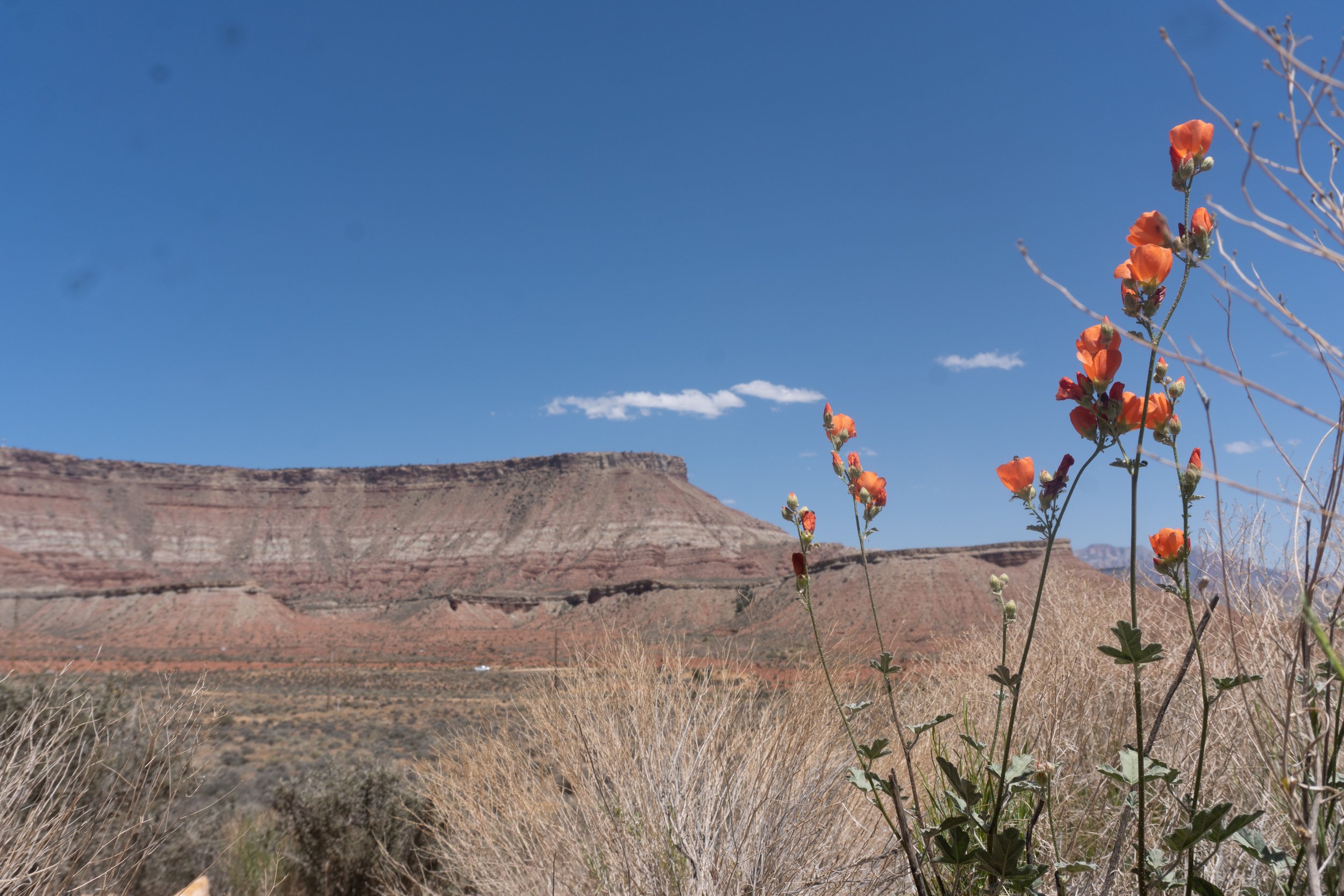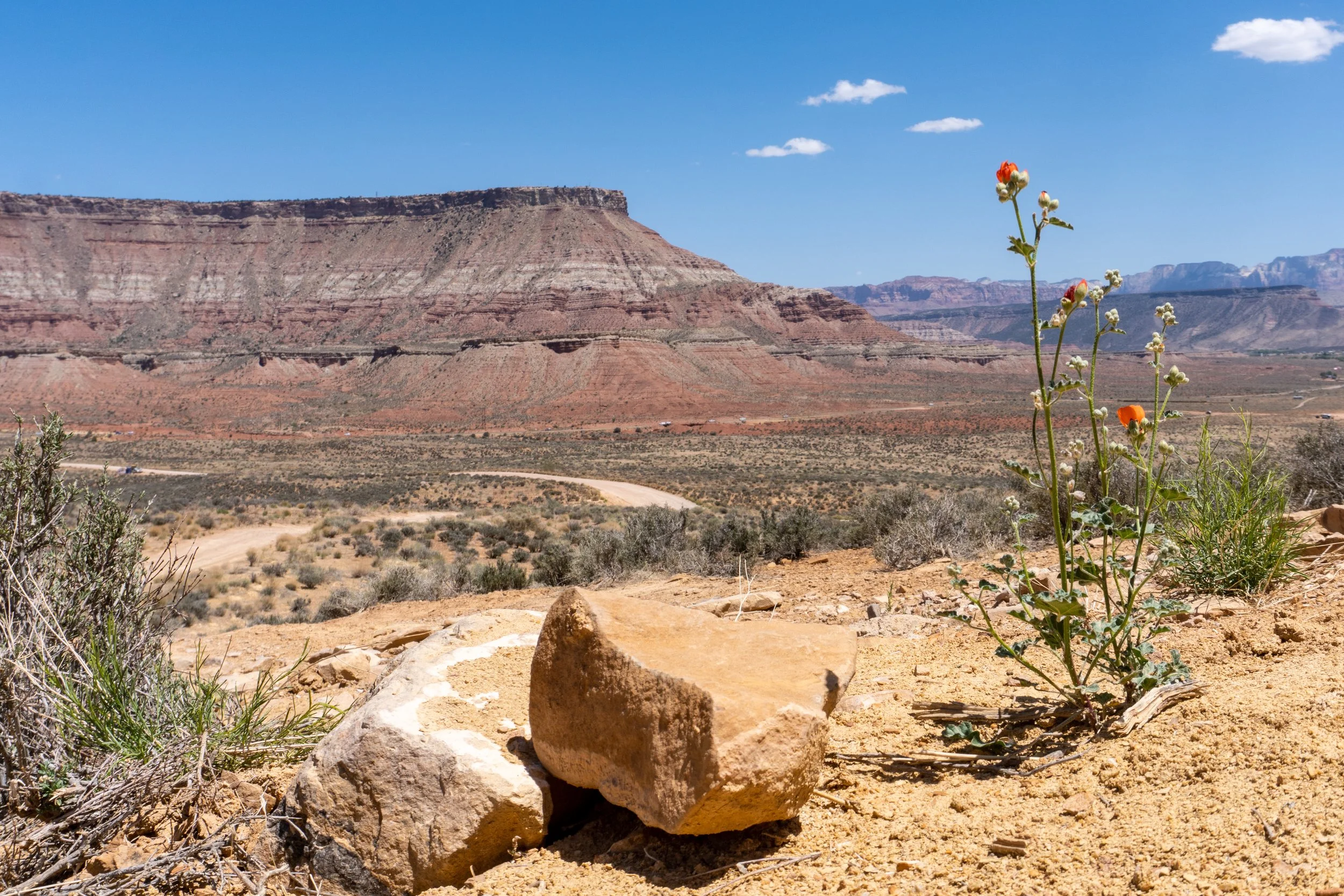Different perspectives
My camera is six inches from the ground to emphasize the one and only flower against the backdrop of the desert mesas and mountains.
One of the easiest ways to make a photo more interesting is to change your point of view. For a normal hiker, everything is seen from 5-6 feet off the ground. For a photographer who wants to be interesting, you’ll need to get away from that default vantage point and show the world in a way that normal hikers won’t see on their own. Rather than writing a book of hypothetical situations, I’ll show you a series of photos taken from different perspectives to make the lesson clear. Remember that one of the most effective ways to practice photography is to study other pictures. Think about the effect created by moving left, right, up, down, near, and far while taking these photos - and remember to Leave No Trace when you’re deciding where to shoot.
Here’s a lazy snapshot. I saw the mesa, held my camera to my face, and took a picture. This is a boring, poorly composed photo. Also, my lens is dirty.
I moved behind some flowers, crouched down, and held my camera between my ankles. The changed perspective adds interest to the picture, but this is still a bad shot.
I moved to a different flower that was on its own. I rotated around it and held my camera near the ground, and pointed it slightly upward. With this perspective, the foreground includes several distinct elements of the American Southwest. The background has a sense of scale, but this viewpoint gives clarity between the foreground setting, the mesa, and the clouds in the sky.
This is a stream in the backcountry of Yellowstone from the default vantage point. I stopped walking when I saw it, held my camera in front of my face, and took a snapshot.
I took a few more steps on the trail and held my camera over my head. Now the trail is eliminated and the shape of the stream is more clear.
After I crop the photo, I have a much better picture of the stream. It’s usually easy to clean lens spots while editing, but it’s best to learn how to care for a camera on trail.
If you want people to be interested in your photography, show them a point of view that they normally wouldn’t have. This was one of my favorite lessons to write because of its simplicity. Rather than asking you to read fifty pages of complicated ways to describe an idea, you only have to look at a few pictures and think about them a little bit to understand the concept. Landscape photography really is not very complicated.






